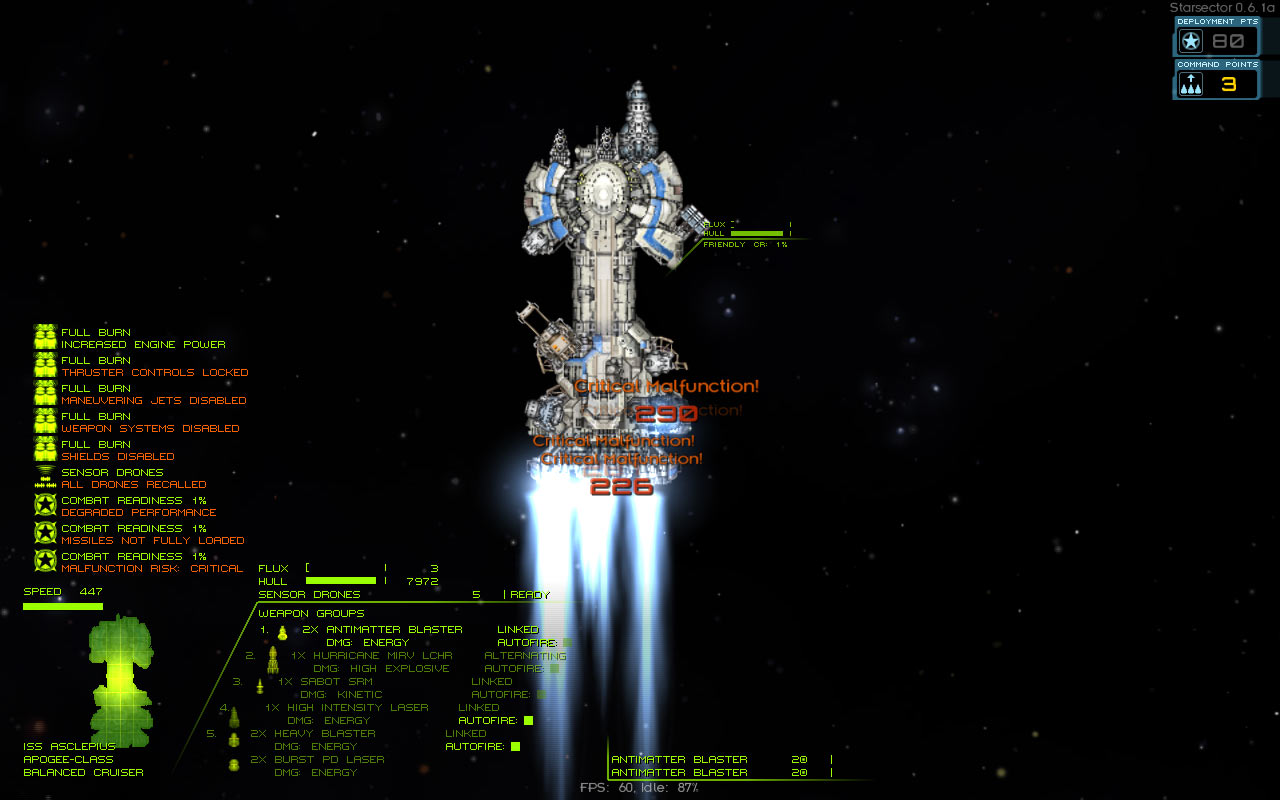Starsector 0.6.2a Release
Update: The hotfix for 0.6.2a is now out. The changes are:
- Fixed ArrayIndexOutOfBoundsException crash when flying around in campaign mode
- Fixed crash caused by trying to do a drag-select in the command UI while the battle is ending
- Fixed crash caused by scuttling last ship at station and then switching to the cargo tab
- Fixed issue where exiting to the main menu directly from combat could result in the encounter dialog popping up after loading a saved game
- Fixed issue where an enemy fleet with low CR across the board would stand their ground but then not deploy anything in battle
- Fixed bug where CR reduction from the Combat aptitude would not apply to the piloted ship if command was transferred prior to battle
- “Crash mothballing” now actually works
- Hermes description now fits in tooltip
- Modding: fixed issue with getFleetManager() crash
- Modding: fixed issue with fireSoundOne being played at the first shot rather than at charge startup
- Modding: CampaignFleetAIAPI.performCrashMothballingPriorToEscape now takes a FleetEncounterContextPlugin
Please re-download the game using the links below – make sure the file you get ends with RC3.
Starsector version 0.6.2a is now out! You can get it here:
(Alternate download links: Windows Mac Linux)
As with other point releases, this is a followup to 0.6a. The main features in this one are:
- Adjustments to combat readiness (more ship longevity and more choices, details below)
- Four new ships!
- Campaign help – dialogs that explain various game mechanics – how to split cargo stacks, how CR works, etc
- Choice of starting difficulty – Easy and Normal. “Easy” gives you a choice of better starting ships and a Mule combat freighter, does not affect the rest of the campaign
- Updated to use Java 7 and the latest version of LWJGL (2.9.2). Improved performance, OS X 10.6 (Snow Leopard) is no longer supported
- Reduced memory usage (mostly affects larger mods)
- Lots and lots of assorted bugfixes/improvements etc
The full patch notes are here.
A note about OS X: if you’re using 10.6, you should be able to upgrade to OS X Mavericks (for free) and run Starsector from there. Not all machines running 10.6 are able to run Mavericks, but the great majority should be able to. I’d have liked to keep supporting 10.6, but Java 7 doesn’t run there, and the machines that can’t be updated to Mavericks likely have a rough time with Starsector to begin with. All in all, it seemed like a worthwhile trade-off for improved performance and access to additional Java features for development.
As usual with OS X, if you’ve got Gatekeeper enabled, right-click on Starsector and click “Open” when running it for the first time. Otherwise, you won’t get the option to run it anyway when it complains that the app is from an “unidentified developer” (that’d be yours truly).
A bit more about the changes to CR: the deployment cost has been cut in half, but so has the recovery rate. This means that the time to recover from a single deployment and the supply cost per deployment both remain the same, but ships can be deployed more times before exhausting their CR.
In addition, low combat readiness no longer prevents a ship from being deployed. Instead, ships will suffer progressively more damaging and debilitating malfunctions – allowing for a desperate last stand rather than a helpless retreat, if it comes to that.























